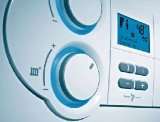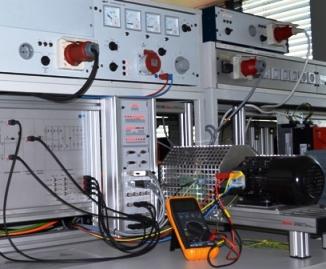Open and closed loop regulation in control and automation systems
 Maintaining the controlled value within the specified limits or changing it according to a given law during the operation of the control and automation system can be done according to open or closed control loops. Consider a system (Fig. 1) consisting of serially connected: object of regulation OR, regulating body RO, regulator P and main Z — a device with the help of which main action is supplied to the system.
Maintaining the controlled value within the specified limits or changing it according to a given law during the operation of the control and automation system can be done according to open or closed control loops. Consider a system (Fig. 1) consisting of serially connected: object of regulation OR, regulating body RO, regulator P and main Z — a device with the help of which main action is supplied to the system.
In open-loop regulation (Fig. 1, a), the reference action x (T) coming to the regulator from the master is not a function of the result of this action on the object, it is set by the operator. A certain value of the reference action will correspond to a certain current value of the controlled variable y (t), which will depend on the disturbing action F (t). For an explanation of basic terms, see here: General principles of building automation systems
The open-loop system is essentially a transmission chain in which the reference action x (t) from the master after proper processing by the controller by means of internal influences Z1(t) and Z2 (T) is transferred to the object of regulation, but there is no reverse effect on the object on the regulator.

Rice. 1. Regulation schemes for open (a) and closed (b) loops: З — setpoint, R — regulator, RO — regulating body, OR — object of regulation, x (T) The adjustment action is, Z1(t) and Z2 (T) — internal regulatory influences, y (T) The controlled value is F (T) It has a disturbing effect.
Examples of open and closed loop control
In fig. 2a shows the rotation speed control scheme permanent engine E. When the motor position of the rheostat P changes, the excitation current in the excitation coil of the generator OVG G will change, resulting in a change in its e. etc. pp. and therefore the voltage supplied to the motor D.
The tachogenerator TG, mounted on the same shaft as the motor D, develops e. d. s proportional to the rotational speed of the motor shaft. A voltmeter connected to the brushes of the tachogenerator with a scale calibrated in units of revolutions allows only visual control of engine revolutions.
If the characteristics of the machines are stable, then each position of the rheostat motor will correspond to a certain value of the motor speed. In this system, the regulator acts on the object, but has no reverse effect, ie. the system operates in open loop.

Rice. 2.Schematic diagrams for open (a) to closed (b) loop DC motor speed control: R — rheostat, OVG — generator excitation coil, G — generator, OVD — motor excitation coil, D — motor, TG — tachogenerator, DP is the drive motor of the rheostat slider, U is the amplifier.
If we connect the system output to the controller in such a way that the controller receives two signals at all times — the signal from the master and the signal from the object output, then we get a closed-loop system. In such a system there is an effect not only of the regulator on the object, but also of the object on the regulator.
In Fig. 2, b shows a scheme for controlling the speed of the DC motor D, in which the output of the system is connected to the input of the system by means of a tachogenerator TG, a rheostat P, an amplifier Y and a motor DP of the slide drive of the rheostat P.
There is automatic engine speed control here. Any change in speed will cause a signal to appear on the motor DP which will move the rheostat slider P to one side or the other of the position corresponding to the given motor speed D.
If the speed of rotation for some reason decreases, then the slide of the rheostat P will take a position where the excitation current in the excitation coil of the generator OB will increase. This will lead to an increase in the voltage of the generator and, accordingly, to an increase in the revolutions of the engine D, which will take its initial position.
As the speed of motor D increases, the rheostat slide P will move in the opposite direction, causing the speed of motor D to decrease.
An open-loop automatic control system independently, without operator intervention, cannot change its mode of operation if the disturbances entering the system become different. A closed system automatically reacts to all changes that occur in the system.
See also: Control methods in automation systems

